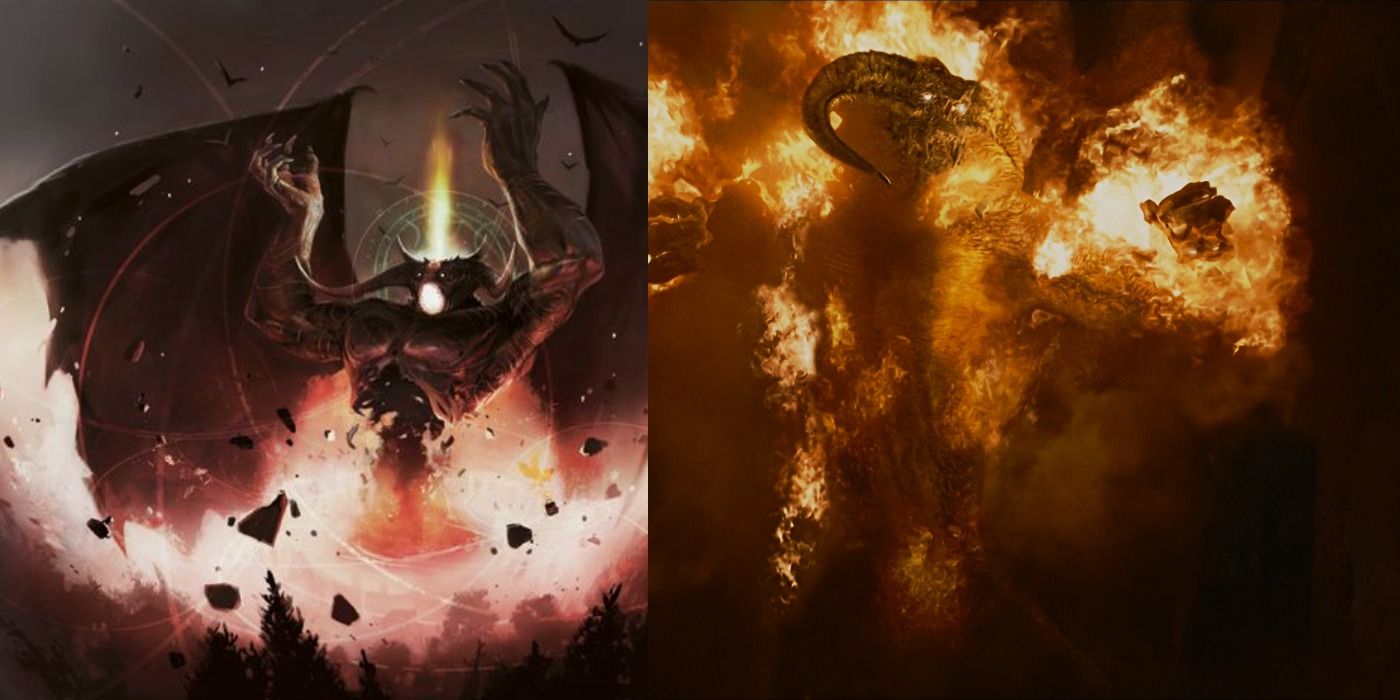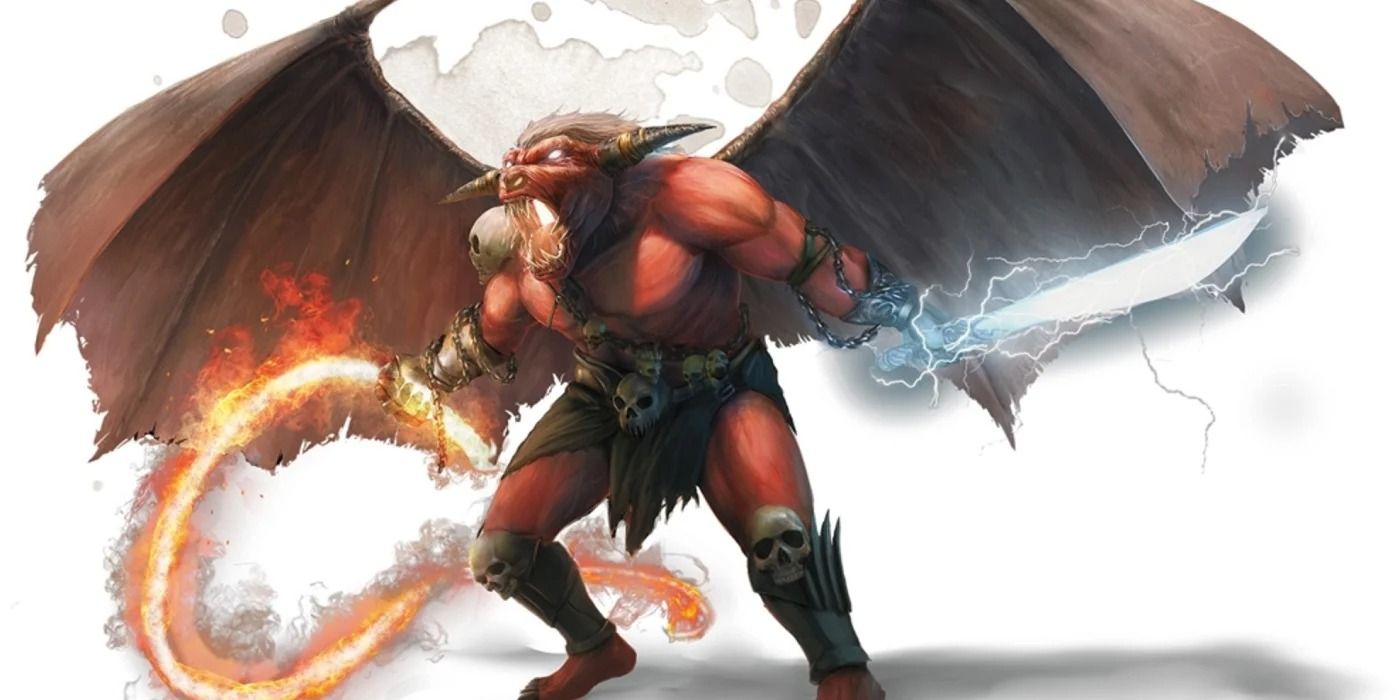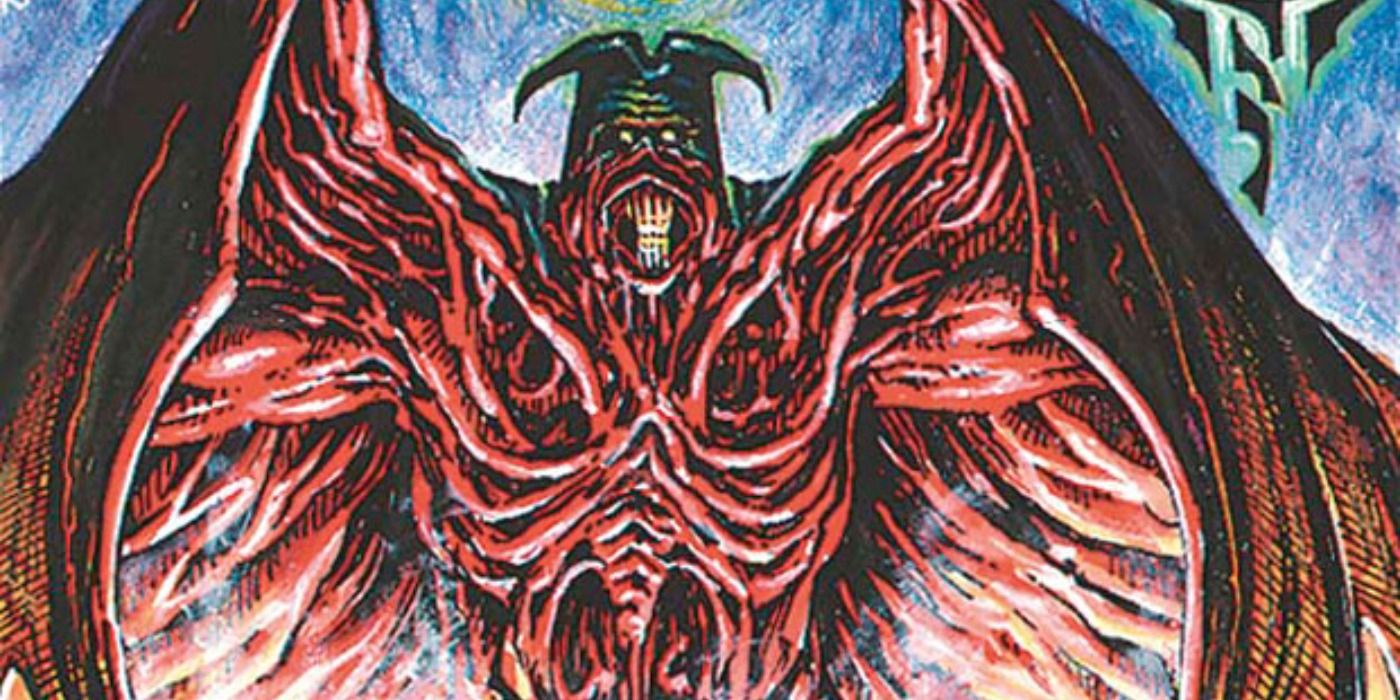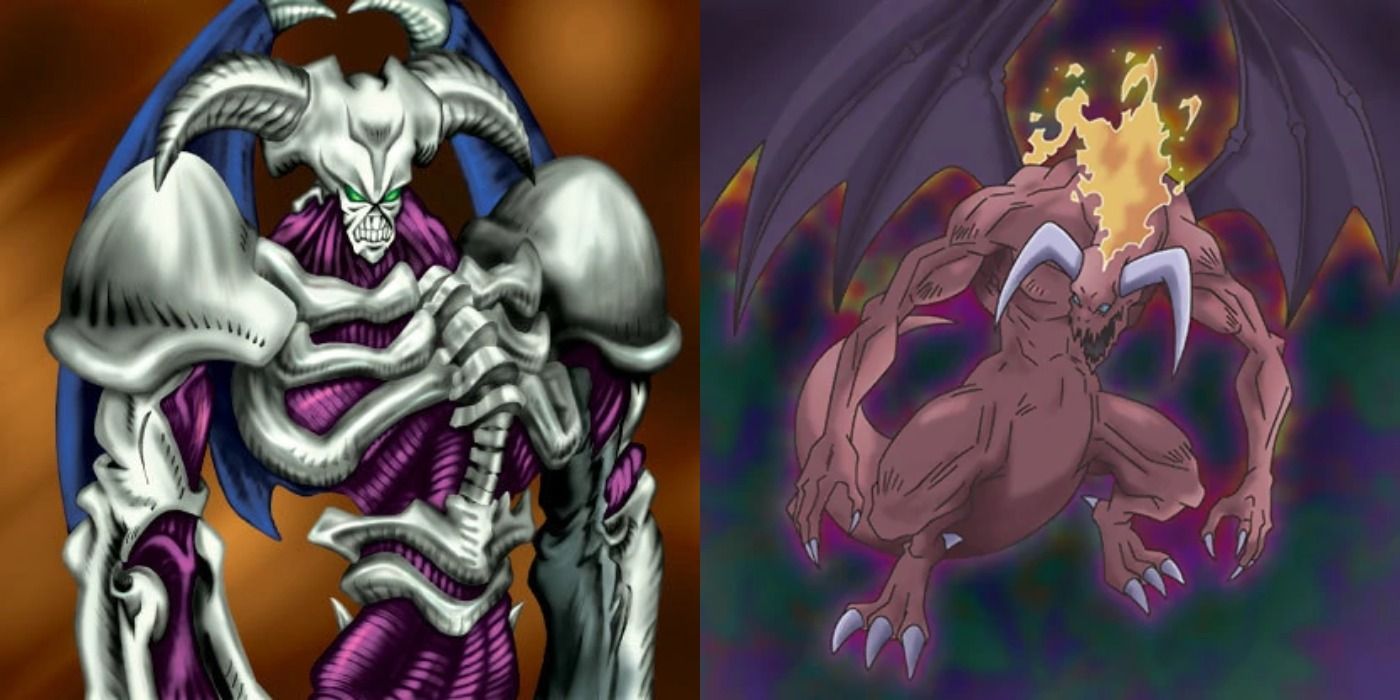The Balrog from The Lord of the Rings directly inspired creatures in Magic: The Gathering and Yu-Gi-Oh!, even if they couldn't use the original name. The term Balrog refers to an entire evil race from the history of Middle-earth, though most people use the name to refer to the creature that Gandalf battles in LOTR's Mines of Moria in The Fellowship of the Ring. That creature is known as Durin's Bane, but people refer to it as the Balrog, as it's the only one of its kind to appear in The Lord of the Rings trilogy.
The Balrog only has a brief appearance in The Fellowship of the Ring, but it left a huge mark on the franchise. Gandalf is separated from the other members of the Fellowship by the Balrog, and he eventually dies after slaying the beast but is reborn as Gandalf the White. Outside of its narrative relevance, the Balrog is just an awesome villain. Sauron is the main antagonist of The Lord of the Rings books and movies, yet he famously never makes a physical appearance, and only Pippin is given a brief glance at his broken form in the Palantir. By comparison, the Balrog is the living embodiment of darkness and fire, who could have slain the Fellowship with ease, had Gandalf not sacrificed himself and sent it crashing down beneath the Bridge of Khazad-dûm. The creature even has cool weapons, as it faces the Fellowship with a massive burning sword, and a whip that it uses to drag Gandalf to his fate.
There have been many Lord of the Rings card games, video games, and tabletop RPGs released over the years, with the One Ring RPG 2nd edition being one of the most recent. The Balrog's iconic status means that it has appeared as a boss in various Lord of the Rings games over the years, but its most famous appearance was in Peter Jackson's movie trilogy, where it brought the exciting running battle in the Mines of Moria to an explosive climax. The Balrog has inspired many monsters over the years, and it has served as the basis for iconic creatures in the biggest trading card games in the world.
LOTR's Balrog Inspired Creatures In Other Pieces Of Media
The Balrog is one of the strongest foes in The Lord of the Rings and certainly one of the most visually impressive. It should come as no surprise that creators of tabletop RPGs and video games would want to use the Balrog in some form, even if they didn't have permission from the Tolkien Estate. Games like Dungeons & Dragons and Akalabeth (the precursor to the Ultima series) both feature Balrogs at one point in time. D&D was stopped from emulating LOTR with legal action, which resulted in some elements that were directly inspired by Tolkien's work being changed, with the Balrog being turned into the Balor. The name might have changed, but it's still obvious what inspired the Balor's design, as it's shown using the same weapons as the Balrog. The Ultima series changed the Balrog into the Balron, with their artwork looking just like most depictions of the creature. The Balor also appears in the Pathfinder tabletop RPG, due to its connections to D&D. Balrogs also exist throughout the Diablo series, where they are depicted as winged demons with red skin.
Lord Of The Pit Is Magic: The Gathering's Version Of LOTR's Balrog
The Lord of the Pit was one of the most fearsome and powerful cards in the first Magic: the Gathering set. It costs seven mana to play to the field and requires the player who wields it to sacrifice a creature at the beginning of their upkeep or take seven damage, but it has Flying and Trample, making it extremely hard for a given opponent to avoid taking powerful blows from the creature. The artist for the first version of the Lord of the Pit card was Mark Tedin, who had a lot of leeway when crafting the design of the creature. Tedin mentioned during an interview with the Magic: The Gathering website that the only description given for this particular old Magic: the Gathering card was "Balrog". This means that the Lord of Pit was Tedin's interpretation of the Balrog from The Lord of the Rings, even though it's not seen using the Balrog's signature flaming sword or whip.
Yu-Gi-Oh! Has Anime Lord Of The Pit (And The Gorlag)
Yu-Gi-Oh! is one of the most popular collectible card games in the world, but it started out as a manga series created by Kazuki Takahashi. The Duel Monsters card game that formed the basis for the Yu-Gi-Oh! was originally created as a one-off game that copied elements from popular trading card games of the era, and it was only due to rabid interest from fans that it appeared in future issues. Duel Monsters would take over Yu-Gi-Oh!'s original manga story and would eventually become a real game, which is still going strong today.
It's clear that Takahashi took inspiration from Magic: The Gathering for some of the card artwork in the Yu-Gi-Oh! manga, as cards like Dark Energy have designs that are almost identical to Magic: The Gathering cards. One of the most obvious examples of this is Summoned Skull, which is one of Yugi Muto's signature cards. Summoned Skull looks incredibly similar to Lord of the Pit, with the original artwork of the card from the manga using the same composition. This means Yu-Gi-Oh! has a Balrog-inspired monster by proxy, even if it's from the Magic: The Gathering version of the Balrog.
The Yu-Gi-Oh! anime had strange exclusive cards that never appeared in the official game. The Japanese version of the Yu-Gi-Oh! anime actually had a card called Balrog, which was used by Alister during the Waking the Dragons filler arc. This creature bears an even stronger resemblance to the Balrog, right down to the burning sword. The creature's name was changed to the Gorlag in the English dub, likely to avoid any lawsuits. The episode where the Gorlag first appeared debuted in 2003, when The Lord of the Rings movies were still being released, and the creature had found new fans around the world.
Source: Magic: The Gathering




